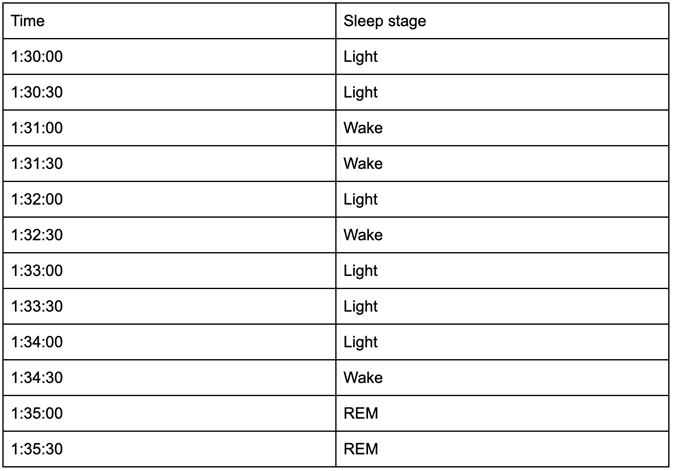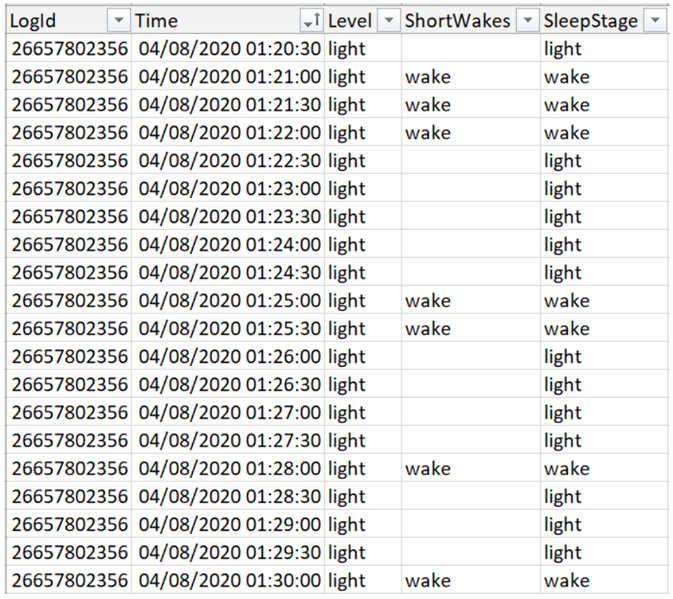Important: Classic Sleep Data
Classic sleep data, which you'll find as an export on sleep data pages within Fitabase, is currently supported but Fitbit plans to phase it out. To ensure consistency in sleep data across the length of your study, we strongly encourage you to use sleep stages.
What are sleep stages?
Most Fitbit devices are able to estimate how long wearers spend in light, deep, and REM stages of sleep each night. Wearers commonly have multiple instances of each stage per night.
Here’s how Fitbit explains sleep stages.
What does sleep stage data look like?
Raw sleep stage data from Fitbit includes details on each sleep stage instance as well as summary level data for the night as a whole.
Summary level data includes the number of instances of each sleep stage as well as the total number of minutes spent in each sleep stage.
Detailed sleep stage data includes the time the sleep stage started and how long it lasted. The minimum length a sleep stage can be is 30 seconds. Individual instances of sleep stages are also represented in 30 second intervals.
Nuance to sleep stages
One nuance of detailed Fitbit sleep data is that short wake periods (less than 3 minutes) are considered “short physiological awakenings” by Fitbit and are not considered full sleep stages. They are represented in a different data set in Fitbit’s sleep stage data that bisects and takes precedence over normal sleep stages.
Each of these short interruptions count toward the wake totals (minutes and count). Additionally, for each short wake interruption, the duration of the interruption is to be subtracted from the superseded sleep stage total and the superseded sleep stage instance count is to be increased by 1 unless the short wake period at the start or end of a sleep stage.
What does that mean? Here’s an example. If a wearer has the following sleep stages:

Then the summaries for those stages are as follows:
Light:
Total count: 3
Total minutes: 3
Wake:
Total count: 3
Total minutes: 2
REM:
Total count: 1
Total minutes: 5
Why do the summaries look like that? What initially appeared to be a single light sleep stage was broken up into three light sleep stages. It may not be immediately clear but if the data is broken down to 30 second intervals it becomes more evident:

Navigating sleep stage exports
The good news is that Fitabase does the hard work for you!
The 30 Second Sleep Stages export breaks down sleep stage data to uniform 30 second intervals just like we did above and also identifies intervals where the original sleep stage type was supplanted by a short wake period.
Here’s an example.

And here’s what each column means:
- The ID of the sleep stage record from Fitabase’s system. Can be ignored.
- Level = the original sleep stage type
- ShortWakes = the sleep stage type that supersedes the original stage type
- SleepStage = the effective sleep stage type for this interval after factoring in short wakes
Sleep stage data takeaway
Questions on sleep stage data can often be clarified by looking at the 30 Second Sleep Stage export in Fitabase.
More technical information on how Fitbit stores/represents this data is available here.